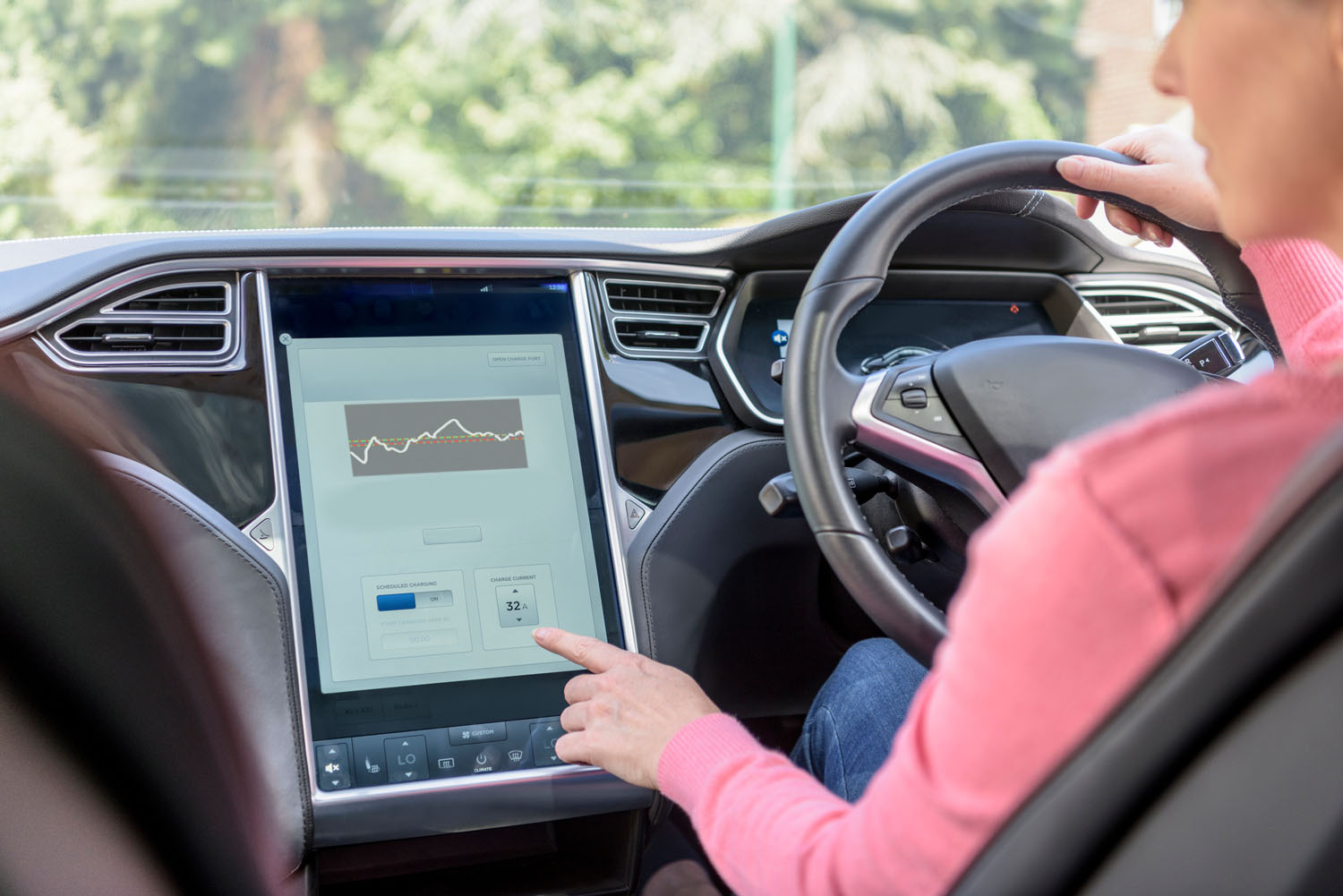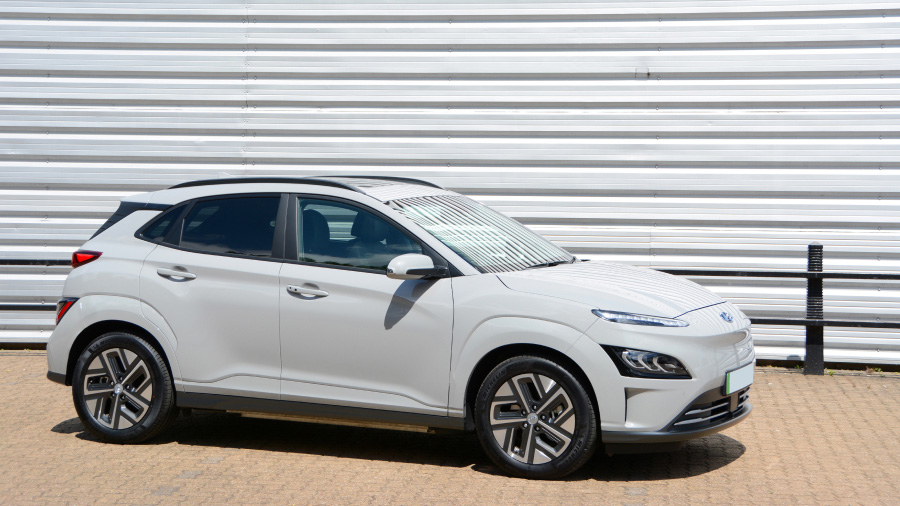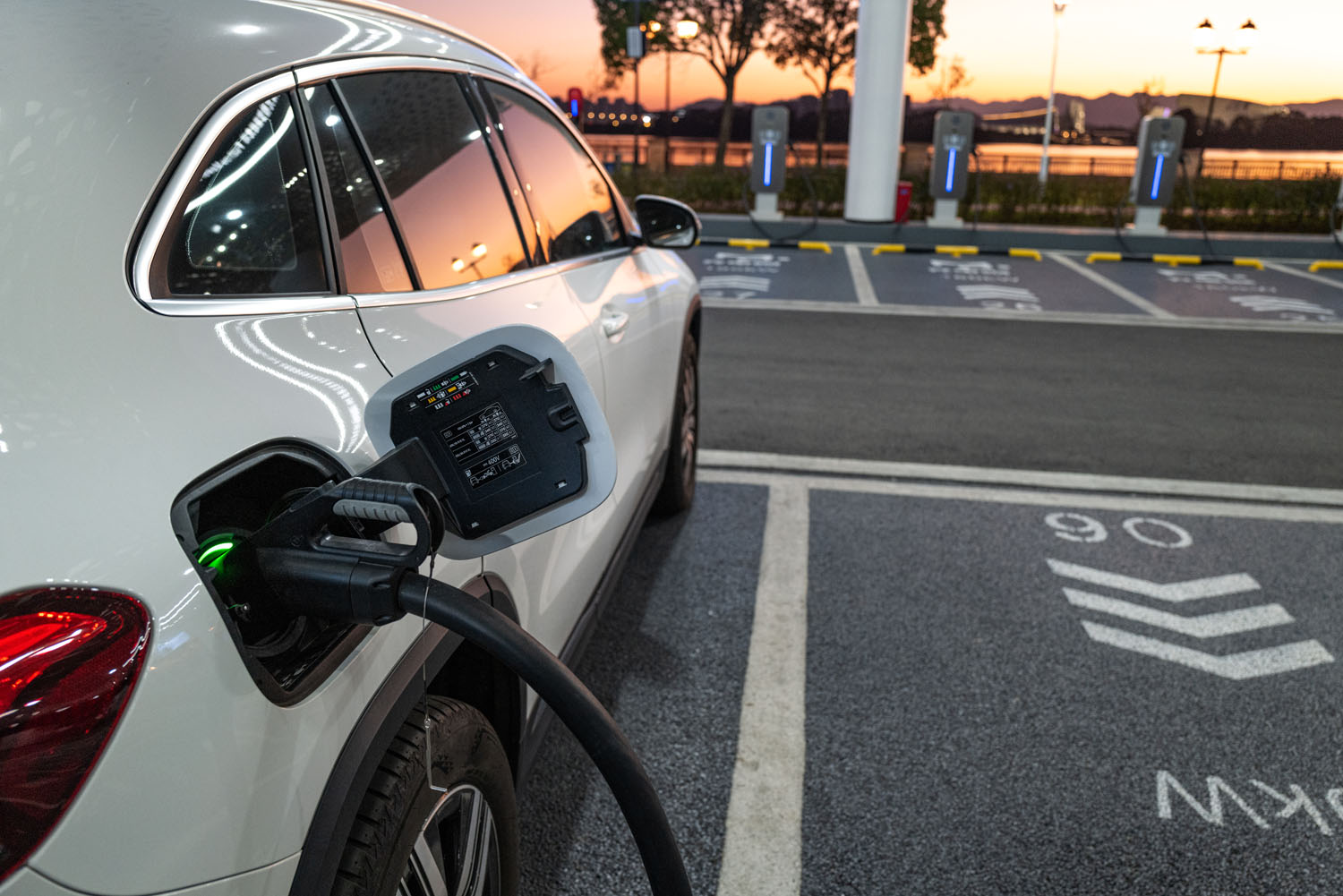Are you ready to go electric?
Want to know if an electric car is the right choice for you?
Join in with our simple online quiz to find out more.
Your electric car guide
As we push towards a greener and more sustainable future, you may be considering making the switch to an electric car yourself. With the more and more EVs on roads, there has never been a better time to do it. If you are new to electric cars there’s a few things worth considering, including types of electric car, how you’ll charge and how much range you’ll need.
We’ve put together this helpful guide to give you an introduction into the world of electric cars to help you decide how you’ll go electric.
What is an electric vehicle?
An electric vehicle (EV) is a vehicle which is powered by an electric motor. The electricity is drawn from a battery which is recharged through an external power source known as an EV charging point.
Types of electric cars
As well as fully electric vehicles, there are also plug-in hybrids and hybrid electric vehicles which use batteries as their secondary source of power.
Battery electric vehicles
A battery electric vehicle (BEV), also known as a fully electric vehicle or all-electric vehicle, is a type of vehicle that exclusively uses electricity to power it which is provided by batteries. Instead of refuelling like a traditional petrol or diesel vehicle, these batteries are charged using a home or public charge point.
Plug-in hybrid electric vehicles
A plug-in hybrid electric vehicle (PHEV) uses both batteries and either petrol or diesel for its power. When you drive a PHEV, the car will typically draw energy from the battery first, before using the petrol or diesel. On average, batteries in PHEVs have an electric range of between 20 and 30 miles, which is usually enough for the daily commute. But for longer journeys, you have the backup of the fuel-powered engine.
Hybrid electric vehicles
Hybrid electric vehicles (HEVs), also known as hybrids or self-charging hybrids, are powered by electricity and a petrol or diesel engine. Unlike BEVs and PHEVs, a HEV uses its combustion engine as its main power source, meaning it cannot be plugged into the mains. The battery in a HEV is relatively small and will only produce a few miles of electric range if you are driving at a low speed.
What are the benefits of electric cars?
More and more people are switching to electric, and we’re seeing thousands of charging stations popping up all over the country every month. Electric cars are now mainstream, and if you’re thinking about changing your vehicle, it’s a great time to think about an electric car.
Can be cheaper to run
Electric cars are incredibly efficient on power and cheaper to “fuel” than petrol or diesel. The cost-per-mile is generally less, meaning you can travel longer distances at a lower cost.
If you drive a fully electric EV, then you are not currently required to pay any road tax which can result in substantial savings annually. EVs and many hybrids are also exempt from the Ultra Low Emissions Zone (ULEZ) charge and Clean Air Zones around the UK, which makes them ideal if you live in or around major cities that implement this.
Electric cars are better for the environment
Because electric cars are powered by lithium-ion batteries, they do not produce harmful exhaust emissions associated with traditional combustion engines. If you drive an all-electric car, then they won’t have a tailpipe which emits greenhouse gases and particulate matter into the atmosphere.
Whilst PHEVs and HEVs do emit these greenhouse gases, some of this is offset by the secondary battery power source. You can read more here.
They can be cheaper to maintain
As electric cars have fewer moving parts compared to their petrol and diesel counterparts, they are more efficient and can be cheaper to maintain. Unlike petrol and diesel vehicles there is no oil to change, no gaskets to replace and no valves to clog up.
Smoother and quieter to drive
Electric cars emit very low sound at low speeds because they don’t have internal combustion engines producing noise and vibrations. Electric car manufacturers build in a low-level buzz sound to warn pedestrians and other road users in the interest of safety rather than as a result of the engine.
Wide variety of electric car models
Whatever your requirements and driving style, there are plenty of options when it comes to electric cars including fully electric and hybrid models. From city cars to something sporty, family sized or daily commuters there is be a wide choice of EVs to choose from, you can see the full range available through our leasing partner CBVC here.
Financial incentives
If you are looking to make the switch to electric, there are lots of financial incentives to help you. For example, you can get government grants to buy and install a home charger if you rent or live in a flat. There is also a Workplace Charging Scheme (WCS) and On-street Residential Chargepoint Scheme (ORCS) which help to cover some of the cost of public and residential car charges.

Factors to consider when choosing to switch to an electric car
An electric car is a big purchase, and as with any car, it’s worth doing your homework before purchasing or leasing to work out what’s right for you, there are plenty of questions you should ask and things you should consider.
Costs – upfront costs
Cost is always a factor when making any purchase or taking out a lease deal. At the moment, EVs generally cost more to purchase outright compared to their diesel and petrol alternatives. Some people choose to purchase second-hand which can be a cheaper option. However, there are some risks associated with this, particularly when it comes to the health and lifespan of the car. For that reason, leasing an electric car can be a great alternative and guarantees you a brand-new car with fixed monthly costs, with a lease you choose the upfront cost you feel comfortable paying as part of your contract.
Costs – running costs
Whilst upfront costs for electric cars are sometimes higher, particularly if you are purchasing an electric car – they are generally cheaper to run than petrol or diesel. Whether you’re talking about road tax, maintenance or fuel, on average, electric car drivers pay less. It’s also worth considering the costs associated with driving in big cities as many now charge a clean air zone charge for more polluting vehicles, but zero charges for fully electric cars.
Range
Electric car range is an important consideration when choosing an electric vehicle. More than half of the electric cars now on the market can travel over 200 miles on a full charge and over a third can do more than 250 miles. The average daily journey in the UK is under 30 miles, so electric cars are ideal for most trips. Some parts of the country have more chargers than others, you should plan where to top up before you hit the road.
“Range anxiety” was a term coined during the early days of EVs, before technology advanced to provide higher capacity batteries and more public charging points. This is not so much of a problem nowadays but before you decide which electric car to get you should record how many miles you typically do in a month and in single journey to choose a car that’s right for you.
Charging your EV
You will need to consider how and where you will charge your fully electric or hybrid car. There are lots of options when it comes to electric car charging. Most EV drivers will install a home-charger which is a dedicated device installed at home, it’s useful to have a driveway or some form of off road parking if you decide on this option. Depending on the car you have, there are several different electric charger types available. These offer different charging capabilities. With newer smart chargers, such as the Indra Smart PRO you get additional features such as remote control, optimised charging and solar charging.
You also have the option to charge whilst out and about using a public charger. Power is paid for through an app or via contactless payment, in the same way you would at a fuel station.
Maintenance
Servicing and maintenance costs tend to be cheaper with electric cars because there aren’t as many moving parts. Unlike traditional petrol or diesel cars, brake pads don’t wear down as quickly on electric vehicles because the electric motor does most of the work to slow down the vehicle. On the other hand, depends on driving style tyres can wear slightly faster on an electric car because of the higher torque. If you lease an electric car, including maintenance within your contract is often an option if you are concerned.
What’s it like to drive an electric car?
Driving an electric car is pretty much the same as driving an automatic petrol or diesel car. You do not need a special licence to drive them and some people even consider them easier to drive than a manual transmission.
Much like driving an automatic, there’s no gear stick, just a selector to choose between park, drive, neutral and reverse. To drive, you simply press the accelerator to speed up and press the brake to slow down.
One noticeable difference between driving an electric car and driving a petrol or diesel car is how quiet they are. This can initially confuse people as it may sound and feel like the car isn’t switched on. Also, electric cars benefit from instant power, meaning they accelerate quickly, which can take some time to adjust to.
Another difference is that electric cars do not coast. Instead, when you slow down, they use a technology called “regenerative braking” to charge the battery. It makes driving much more efficient and saves brake wear, but it can feel a bit different as you drive but most drivers quickly get the hang of it.

How can I get an EV?
New and second-hand EVs can be purchased from a dealership in the same way you would purchase a petrol or diesel car. This can be done by buying the car outright or by spreading the cost of the car through a lease or other financial agreement.
PCP and Hire Purchase
Generally speaking, both of these options involve paying an initial deposit and then fixed monthly payments until you come to the end of your agreement. Both options usually allow you to own the car at the end of your agreement subject to paying an ‘option to purchase fee’ or a balloon payment.
Electric car leasing
Put simply, electric car leasing means renting the car for a set period of time. This can be through either personal electric car leasing or a business car lease through your place of work.
Leasing an electric car can often work out more cost effective than PCP or HP, however unlike the above options you are not automatically offered the opportunity to ‘buy’ the car at the end of the agreement, although some funders will allow you to do so upon request.
Compared to buying, leasing is a great way to get access to the latest makes and models without worrying about depreciation. Leasing also comes with a manufacturer’s warranty and additional maintenance packages which cover the general maintenance and servicing costs for extra peace of mind. Find out more about how electric car leasing works in our guide.
What EV grants or savings are available?
To encourage people to go electric, there are a few government grants and tax efficient schemes to help reduce the cost of owning and leasing an EV.
Plug-in vehicle grant
As of June 2022, the following low-emission vehicles may be eligible for a plug-in grant: wheelchair-accessible vehicles, mopeds, motorcycles, taxis, trucks and vans. The value of the grant will vary, depending on the vehicle type. However, you must have an eligible plug-in vehicle to qualify for this.
Electric vehicle charge point grant
If you rent your property or live in a flat, you may be eligible for the Electric vehicle charge-point grant. This grant provides up to £350 or 75% off the cost and installation of a home charger (whichever is lower).
Salary sacrifice schemes
Employer Salary sacrifice schemes mean paying for a car lease straight from your salary before you pay tax. The benefit of doing this is that you won’t pay tax on the lease you pay or other benefits included, for example EV home charger or insurance. You can encourage your company to set up a salary sacrifice scheme here.
Company car benefits
If you run your own business, you may be eligible to get a company car through electric car business contract hire (BCH). BCH provides a number of tax benefits including very low benefit-in-kind rates and refundable VAT on the lease.
Make the switch to electric with electric car leasing from ElectriX
As electric car leasing experts, we make switching to electric easy. From lease deals, smart home charging and electric car insurance, we offer everything you need in one place to make the process hassle-free.
Want to find out more about leasing an electric car from us? Start by clicking here to see our range or explore our guide on leasing an electric car for more information.
Frequently asked questions
Are electric cars less reliable than petrol or diesel cars?
Electric cars are very reliable, they don’t have as many moving parts as petrol or diesel cars, so there’s no clutch, gearbox, spark plugs or exhaust to go wrong. They also generate less vibration, which reduces the wear on other parts and keeps maintenance costs down. There is no evidence to suggest they are any less reliable than combustion cars.
How do you service an electric car?
Just like petrol or diesel, you can either use your local dealer or a mobile service. If you’d prefer to use an independent local garage, many electric-friendly garages are registered with the Hybrid and Electric Vehicle Repair Alliance (HEVRA). If you choose to lease a car, you can usually opt to include servicing and maintenance as part of your agreement.

How much is electric car road tax?
Because there aren’t any emissions at the tailpipe, vehicle excise duty (road tax) on fully electric cars is currently zero. However, this is due to change from April 2025.
Are electric cars suitable only for urban driving?
While electric cars are well suited to town and city driving, they’re also great for cross-country journeys. Improvements in battery range and charging infrastructure mean that electric cars are ideal for most trips but you should always make sure you have enough range to cover your journey, or simply plan to charge up on route.

Are electric cars safe?
Yes, electric cars are safe and they are all built to the same safety standards as their diesel and petrol counterparts with many receiving the top-mark 5-star safety ratings from Euro NCAP.
All electric cars must go through stringent safety assessments before they are made available to buy and they have plenty of safety tech built in. Like any car, the safety of an electric car depends on how well it has been maintained and cared for – to keep yours in tip top condition regularly service and look it as you would any car.
What sort of electric car chargers are there?
There are two main types of electric car chargers: standard chargers and rapid chargers. Standard chargers are the most common. They’re the sort you’ll have fitted at your home and at supermarkets and car parks. Rapid chargers are much faster, and you’ll often find them at fuel stations and motorway services. You can read more about electric car charging in our guide.

Discover electric cars today
Discover electric cars that are available through our partner CBVC today.
Discover cars available
